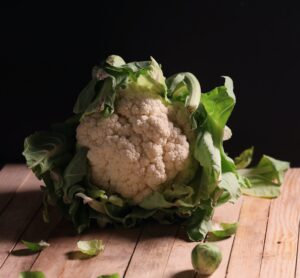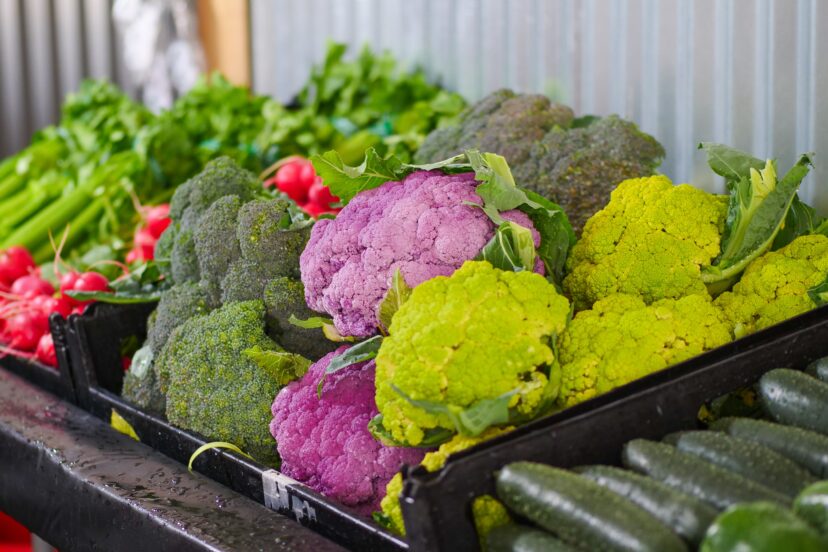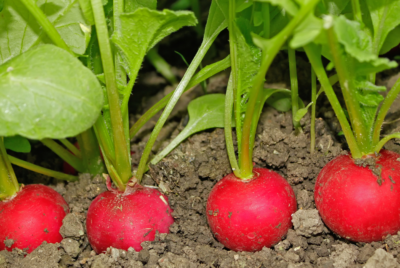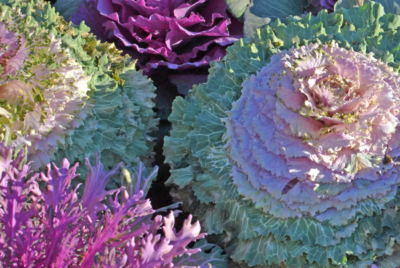Cauliflower Companion Plants

Companion Planting for Cauliflower
I. Introduction
Companion planting has always fascinated me as a gardening technique that not only maximizes the use of space but also enhances plant health and productivity. When it comes to growing cauliflower, a vegetable I’ve nurtured for years, understanding the ins and outs of companion planting can significantly impact your harvest.
Overview of Companion Planting with Relevance to Cauliflower
Companion planting is a strategic method in gardening where different plants are grown together for mutual benefits, including pest control, improved soil health, and better growth. It’s particularly relevant for cauliflower, a plant that can thrive when paired with suitable companions. These companions can deter pests, enhance soil nutrients, and foster a conducive growing environment, ultimately leading to healthier, more bountiful cauliflower crops. This approach not only maximizes garden space but also encourages a more natural, sustainable form of cultivation.
II. Understanding Cauliflower’s Needs
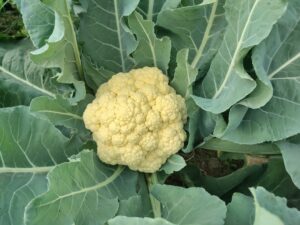
Soil Preferences
Cauliflower, a member of the Brassica family, has specific growing needs crucial for its successful cultivation. It prefers well-drained, fertile soil with a slightly acidic to neutral pH, ideally between 6.0 and 7.0. This soil condition ensures optimal nutrient absorption.
Sunlight and Watering Requirements
For sunlight, cauliflower requires full to partial sun exposure, ideally around 6 hours of sunlight daily. This ensures robust growth. Watering needs are consistent but moderate; the soil should be kept evenly moist. Over-watering can lead to root rot, while under-watering can stunt growth and affect head formation.
III. Benefits of Companion Planting for Cauliflower
Companion planting offers several benefits for cauliflower cultivation:
a. Pest Control:
Certain plants can naturally deter pests that commonly target cauliflower. For instance, aromatic herbs like thyme and rosemary repel cabbage loopers and other pests, reducing the need for chemical pesticides. Marigolds, with their strong scent, are effective in warding off nematodes and other soil-borne pests.
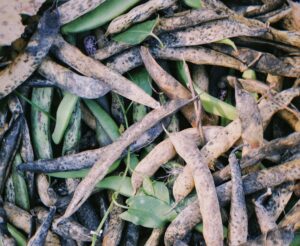
b. Improved Soil Health:
Companions like legumes can enhance soil fertility. They fix nitrogen in the soil, making it available for cauliflower, which is a heavy feeder. This symbiotic relationship promotes healthier growth and potentially reduces the need for synthetic fertilizers.
c. Better Pollination and Growth:
Flowers such as daisies or lavender attract beneficial insects, including bees and butterflies, which are crucial for pollination. This increased pollinator activity can lead to better yields. Additionally, these plants can also attract predatory insects that prey on common pests, further protecting the cauliflower.
Overall, companion planting creates a more balanced and sustainable ecosystem in your garden, conducive to the healthy growth of cauliflower.
IV. Best Companion Plants for Cauliflower
Selecting the best companion plants for cauliflower can significantly enhance its growth and yield. Here are some ideal companions:

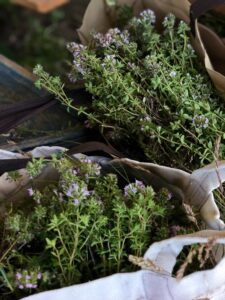
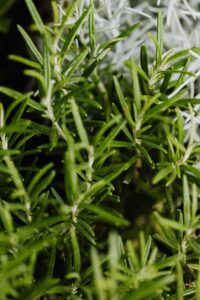
a. Aromatic Herbs
Plants like dill, thyme, and rosemary are excellent companions for cauliflower. These herbs not only repel common pests such as aphids and cabbage loopers with their strong scents but also attract beneficial insects. They help in creating a pest-resistant and pollinator-friendly environment.
b. Leafy Greens
Spinach and lettuce make great neighbors for cauliflower. These greens have a shallow root system, which means they don’t compete aggressively for nutrients. They also help in maintaining soil moisture and can be harvested quickly, making space for cauliflower heads to expand.
c. Root Vegetables
Carrots and beets are suitable companions. They grow underground and utilize different soil layers, preventing competition for resources. Their presence can also help to break up the soil, improving its structure and benefiting cauliflower’s root growth. Additionally, carrots can repel certain pests that harm cauliflower, making them an advantageous pairing.



V. Plants to Avoid Near Cauliflower
When cultivating cauliflower, it’s crucial to be aware of plants that should be avoided as companions due to incompatibility or potential harm:
Incompatible Plants
Cauliflower does not fare well when planted near certain vegetables and herbs. Notable examples include strawberries, tomatoes, and peppers. These plants can attract pests that also target cauliflower, increasing the risk of infestation.
Reasons for Avoidance
The primary reason for avoiding these plants is their tendency to attract pests and diseases common to cauliflower. Additionally, some of these plants, like tomatoes, are heavy feeders and may compete with cauliflower for nutrients, leading to stunted growth. Therefore, maintaining a distance from these incompatible plants helps in ensuring the health and productivity of your cauliflower crop.
VI. Designing Your Cauliflower Companion Planting Layout
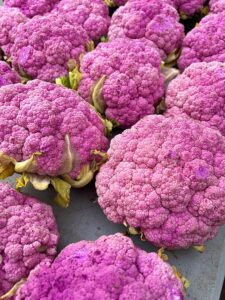
Designing an effective layout for cauliflower companion planting involves careful consideration of spatial arrangement and timing:
Spatial Arrangement
When planning your garden, consider the height, spread, and root system of each plant. For instance, taller plants like dill should be placed where they won’t shade the cauliflower.
Arrange low-growing leafy greens around the cauliflower, utilizing ground space efficiently.
This strategic placement ensures each plant receives adequate sunlight and nutrients.
Timing and Seasonal Considerations
Timing is crucial in companion planting. Plant cauliflower with companions that have similar growing periods and temperature requirements. For example, planting cool-season leafy greens alongside cauliflower aligns their growth cycles, ensuring harmonious development.
Additionally, understanding the seasonal needs of each plant helps in planning the planting and harvesting schedule, maximizing garden productivity throughout the growing season.
VII. Maintenance Tips for a Healthy Cauliflower Companion Garden
Maintaining a healthy cauliflower companion garden requires attention to detail, particularly in monitoring and nourishing the plants:
Regular Monitoring
Regularly inspect your cauliflower and its companions for signs of pests, diseases, or nutritional deficiencies. Early detection is key to managing potential issues. Check for common cauliflower pests like aphids and cabbage loopers, and apply organic pest control methods if necessary.
Watering and Fertilizing Strategies
Cauliflower needs consistent moisture, so ensure even watering, especially during dry spells. Use mulch to retain soil moisture and regulate temperature. For fertilizing, use a balanced, slow-release organic fertilizer. Be mindful of the needs of companion plants as well, adjusting your watering and fertilizing routine to suit the entire garden’s requirements. This balanced approach promotes a thriving, productive companion planting environment.
VIII. Common Challenges and Solutions in Companion Planting
In companion planting, especially with cauliflower, gardeners may face certain challenges, but there are effective solutions:
a. Pest Infestations
Common pests like aphids, cabbage loopers, and flea beetles can be a nuisance. To combat these, encourage beneficial insects by planting flowers like marigolds or herbs like dill. Additionally, using organic pest repellents or insecticidal soaps can help control infestations without harming the ecosystem.
b. Plant Diseases
Cauliflower is prone to fungal diseases like powdery mildew and black rot. To prevent these, ensure proper spacing for air circulation, practice crop rotation, and avoid overhead watering. If diseases appear, remove affected parts immediately and apply appropriate organic fungicides. Being proactive and attentive to these challenges helps maintain a healthy and productive companion planting garden.
IX. Personal Experiences and Success Stories
Reflecting on my journey with cauliflower companion planting, it’s been a mix of learning and success. Starting with a few simple combinations, like pairing cauliflower with aromatic herbs, I witnessed a notable reduction in pest issues and an improvement in overall plant health. The vibrant growth of cauliflower alongside these companions was a rewarding sight.
Gathering insights from fellow gardeners has been invaluable. One tip that stood out was interplanting cauliflower with leafy greens, which not only saved space but also created a microclimate beneficial for both. These experiences have deepened my appreciation for the symbiotic relationships in nature and the effectiveness of companion planting.
X. Conclusion on Cauliflower Companion Plants
In conclusion, companion planting for cauliflower offers numerous benefits, from enhanced pest control and improved soil health to optimized pollination and growth. Key companions include aromatic herbs, leafy greens, and root vegetables, while avoiding incompatible plants like tomatoes and strawberries. Effective garden design, regular maintenance, and addressing challenges like pest infestations and diseases are crucial for success. My personal journey and shared tips from fellow gardeners highlight the practicality and rewards of this approach. For new gardeners, I encourage you to try companion planting with cauliflower. It’s not only a sustainable gardening practice but also a fulfilling journey that connects you closer to nature.

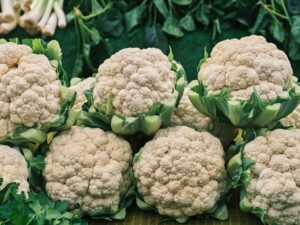

XI. FAQs about Cauliflower Companion Plants
What are the best herbs to plant with cauliflower?
Planting herbs like dill, thyme, and rosemary alongside cauliflower works great. These herbs repel common pests and attract beneficial insects, enhancing the cauliflower’s growth environment.
How often should I water my cauliflower companion garden?
Water your cauliflower companion garden consistently to keep the soil evenly moist. Generally, watering once or twice a week is sufficient, but adjust based on weather conditions and soil type.
Can I plant cauliflower with tomatoes?
It’s best not to plant cauliflower with tomatoes. Tomatoes can attract pests that also harm cauliflower and compete for nutrients, potentially hindering cauliflower’s growth.
What are the signs of pest infestation in cauliflower?
Look for chewed leaves, visible pests like aphids or cabbage loopers, and stunted growth. These are common indicators of pest infestation in cauliflower plants.
How can I naturally improve soil health for cauliflower?
Incorporate organic matter like compost into the soil and practice crop rotation. Planting legumes as companions can also help fix nitrogen in the soil, naturally improving its health for cauliflower growth.
c. Companion Plants for Sweet Potato
d. Cauiflower Companion Plants
